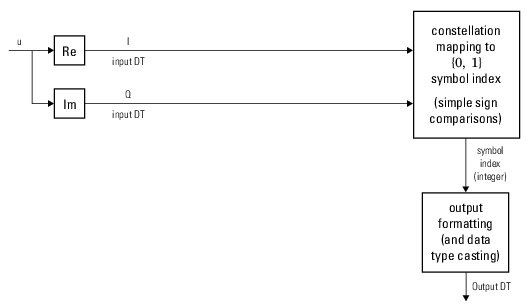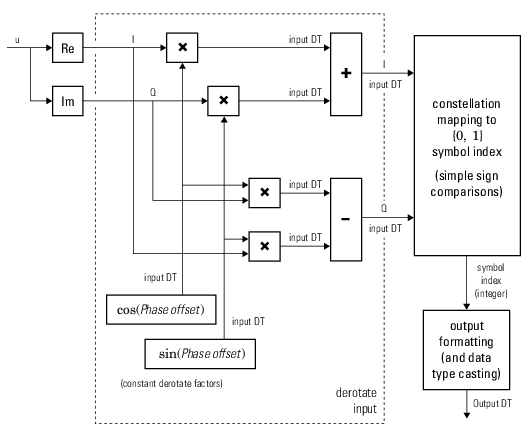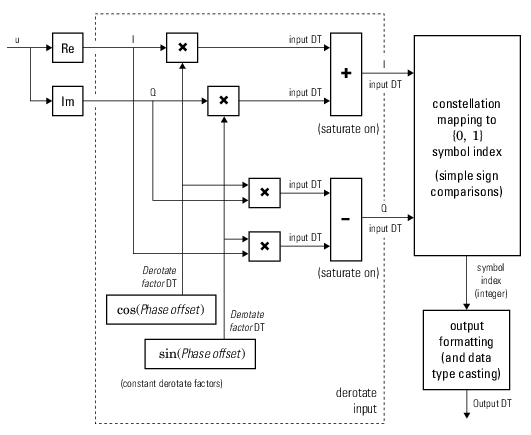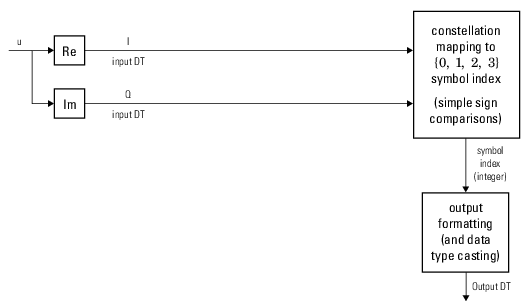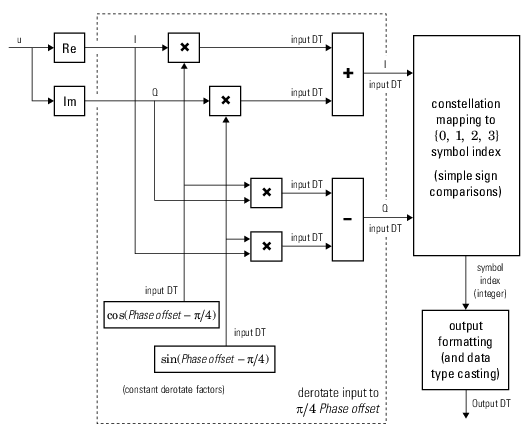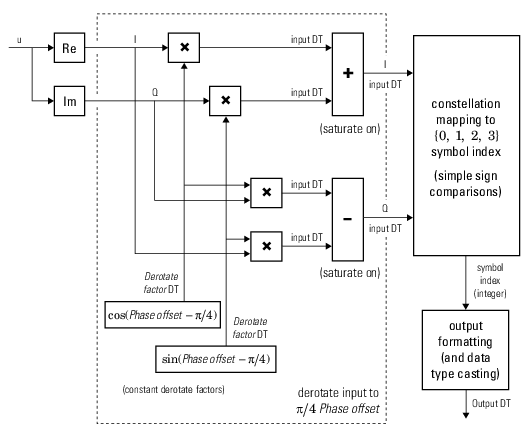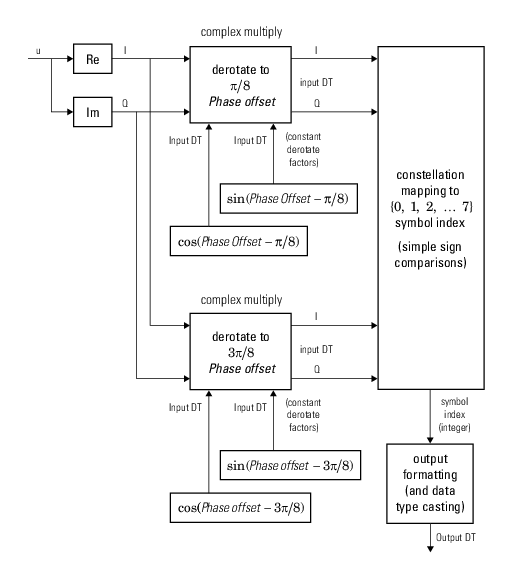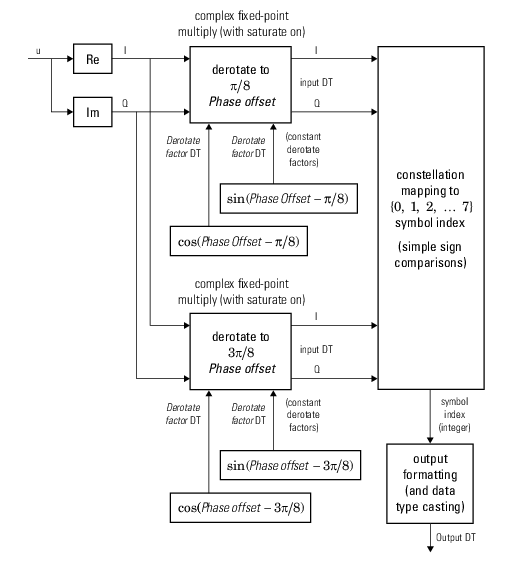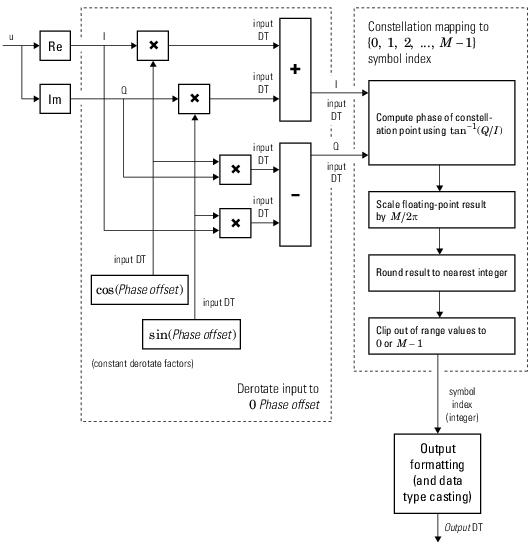comm.gpu.PSKDemodulator
Demodulate signals using M-ary PSK method with GPU
To use this object, you must install Parallel Computing Toolbox™ and have access to a supported GPU. If the host computer has a GPU configured, processing uses the GPU. Otherwise, processing uses the CPU. For more information about GPUs, see GPU Computing (Parallel Computing Toolbox).
Description
The comm.gpu.PSKDemodulator object demodulates a signal that was modulated using
the M-ary phase shift keying (M-PSK) method implemented on a graphics processing unit
(GPU). The input is a baseband representation of the modulated signal.
To demodulate a signal that was modulated using the M-PSK method:
Create the
comm.gpu.PSKDemodulatorobject and set its properties.Call the object with arguments, as if it were a function.
To learn more about how System objects work, see What Are System Objects?
Creation
Syntax
Description
gpumpskdemod = comm.gpu.PSKDemodulator creates a
GPU-based demodulator System object™ that demodulates the input signal using the M-PSK method.
gpumpskdemod = comm.gpu.PSKDemodulator(
sets properties using one or more name-value arguments. For example,
Name=Value)comm.gpu.PSKDemodulator(DecisionMethod="Hard decision")
specifies demodulation using the hard-decision method.
gpumpskdemod = comm.gpu.PSKDemodulator(M,phase,
sets the Name=Value)ModulationOrder
property to M, sets the PhaseOffset property
to phase, and sets optional name-value arguments. Specify
phase in radians.
Properties
Usage
Description
y = gpumpskdemod(x,var)var. This
syntax applies when you set the BitOutput property to
true, the DecisionMethod
property to 'Approximate log-likelihood ratio' or
'Log-likelihood ratio', and the VarianceSource
property to 'Input port'.
Input Arguments
Output Arguments
Object Functions
To use an object function, specify the
System object as the first input argument. For
example, to release system resources of a System object named obj, use
this syntax:
release(obj)
Examples
More About
References
[1] Proakis, John G. Digital Communications. 4th ed. New York: McGraw Hill, 2001.
Extended Capabilities
Version History
Introduced in R2012a
See Also
Functions
Objects
comm.gpu.PSKModulator|gpuArray(Parallel Computing Toolbox)
Blocks
Topics
- GPU Arrays Support List for System Objects
- GPU Computing (Parallel Computing Toolbox)
- Accelerate Simulation Using GPUs
